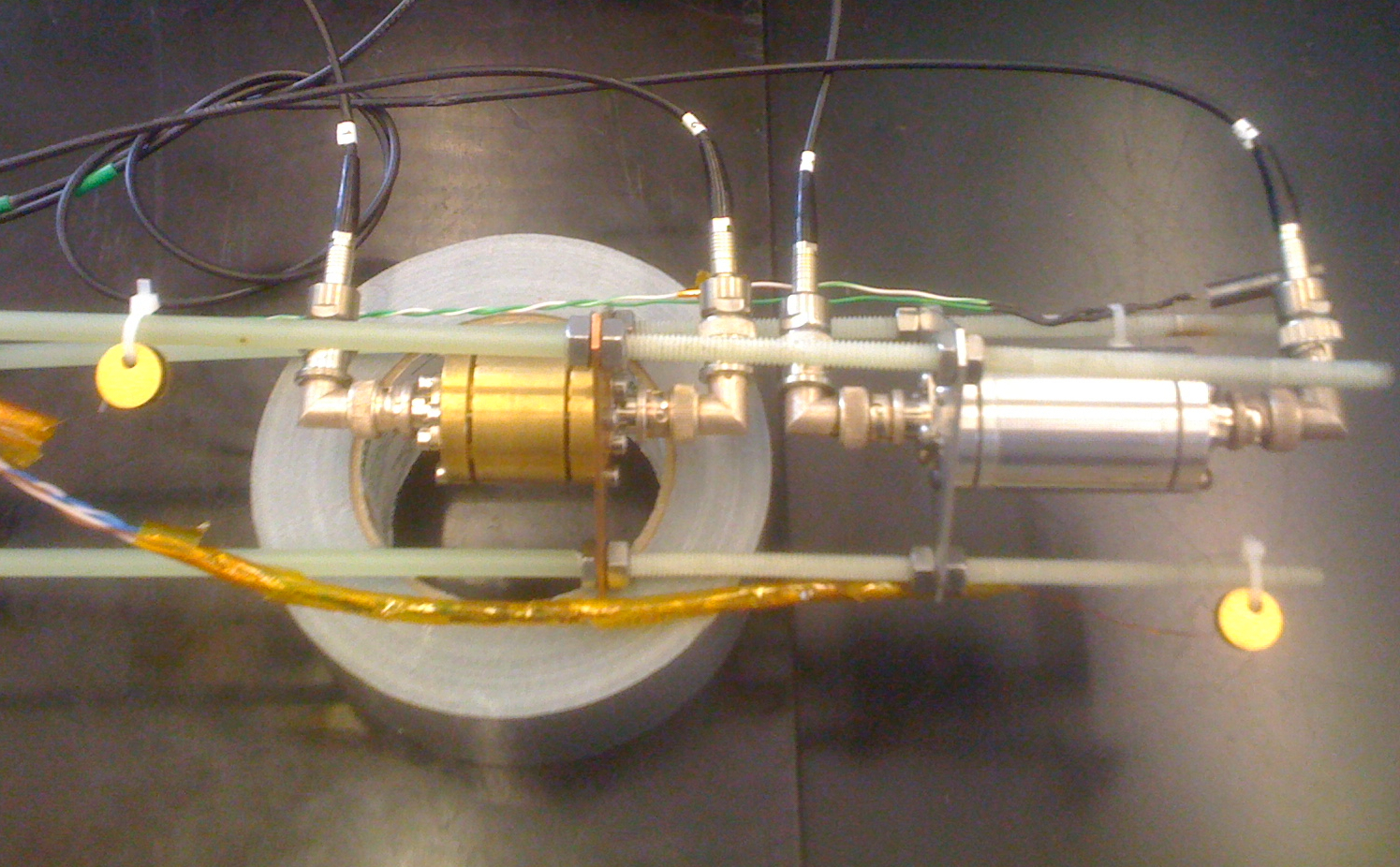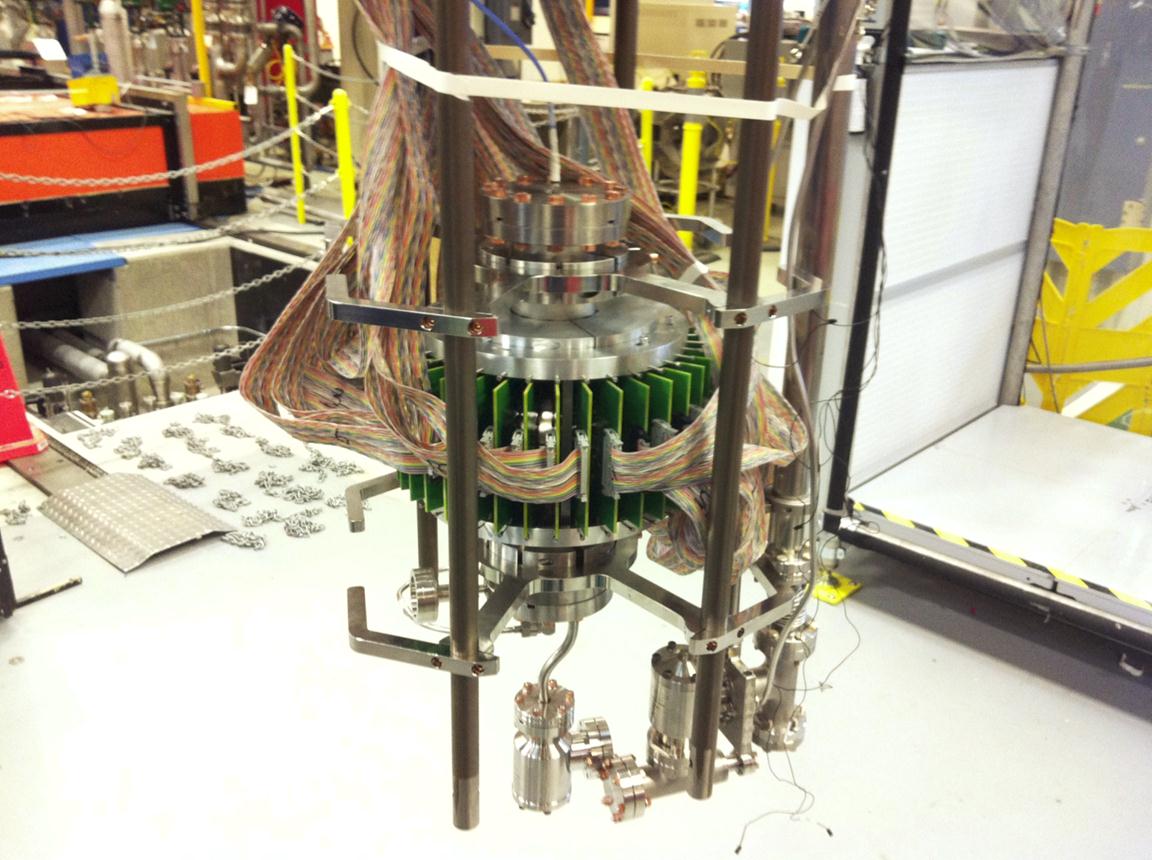



"Superconducting Radio Frequency particle accelerator cavity design/testing "
Prof. Robert S. Orr




While the current generation of collider physics experiments relies on extensive arrays of superconducting magnets to trap the particles, keep them orbiting, and bring them into collision, the next generation of experiments will rely on similarly extensive arrays of superconducting radio frequency (SRF) cavities to provide high-field, cost-effective acceleration to energies of 1 TeV (or higher).
Our group is collaborating with
TRIUMF on the design and testing of cavities for the next generation
electron positron
collider,
the ILC . Over the past four years, we have developed a
novel ``second sound'' detector that
can be used to triangulate acoustic signals generated by quenches of the SRF cavities caused by manufacturing
defects of impurities.
These detectors have been used in the test
cryostats at TRIUMF and Fermilab. At Toronto, we are also construucting a system
to measure the millikelvin temperature rises, at the surface of the cavities, associated with the onset of electron field emission. In the summer of 2015 we hope to use both of these systems to perform tests at TRIUMF on the UBC campus in Vancouver.
We have an opening for a summer-student to work in our group this
summer. There may also be the opportunity for the student to
work on the cavity field simulations and spend a week or two at TRIUMF or Fermilab
during a prototype cavity test.